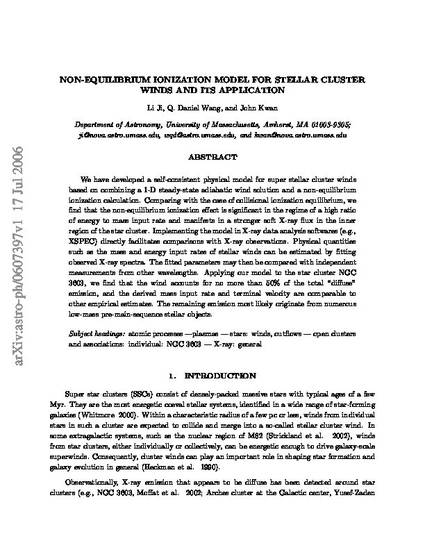
We have developed a self-consistent physical model for superstellar cluster winds based on combining a 1D steady-state adiabatic wind solution and a non-equilibrium ionization calculation. Comparing with the case of collisional ionization equilibrium, we find that the non-equilibrium ionization effect is significant in the regime of a high ratio of energy to mass input rate and manifests in a stronger soft X-ray flux in the inner region of the star cluster. Implementing the model in X-ray data analysis softwares (e.g. xspec) directly facilitates comparisons with X-ray observations. Physical quantities such as the mass and energy input rates of stellar winds can be estimated by fitting observed X-ray spectra. The fitted parameters may then be compared with independent measurements from other wavelengths. Applying our model to the star cluster NGC 3603, we find that the wind accounts for no more than 50 per cent of the total ‘diffuse’ emission, and the derived mass input rate and terminal velocity are comparable to other empirical estimates. The remaining emission most likely originate from numerous low-mass pre-main-sequence stellar objects.
Available at: http://works.bepress.com/daniel_wang/25/

This is the pre-published version harvested from ArXiv. The published version is located at http://onlinelibrary.wiley.com/doi/10.1111/j.1365-2966.2006.10809.x/abstract